-
01-01-2015
Ineffective airway clearance: accuracy of clinical indicators in asthmatic children
Revista Brasileira de Enfermagem. 2015;68(5):862-868
Abstract
Ineffective airway clearance: accuracy of clinical indicators in asthmatic children
Revista Brasileira de Enfermagem. 2015;68(5):862-868
DOI 10.1590/0034-7167.2015680514i
Views0See moreABSTRACT
Objective:
to analyze the accuracy measurements of clinical indicators of the nursing diagnosis Ineffective airway clearance.
Method:
cross-sectional study with 205 asthmatic children treated in the emergency unit of a hospital in the city of Fortaleza, Ceará. An interview script and pulmonary evaluation were used for data collection.
Results:
the diagnosis of Ineffective airway clearance was present in 89.3% of the sample. The most prevalent clinical indicators were dyspnea, change in respiratory rate, change in respiratory rhythm, orthopnea, adventitious respiratory sounds and ineffective cough. The clinical indicators with highest sensitivity were dyspnea, change in respiratory rate, change in respiratory rhythm, orthopnea and adventitious respiratory sounds. Ineffective cough and adventitious respiratory sounds were the indicators with best specifi city.
Conclusion:
the clinical indicator adventitious respiratory sounds was the best predictor of Ineffective airway clearance in asthmatic children treated in emergency units.
-
01-01-2015
Mortality from external causes in Pernambuco, 2001-2003 and 2011-2013
Revista Brasileira de Enfermagem. 2015;68(5):855-861
Abstract
Mortality from external causes in Pernambuco, 2001-2003 and 2011-2013
Revista Brasileira de Enfermagem. 2015;68(5):855-861
DOI 10.1590/0034-7167.2015680513i
Views0See moreABSTRACT
Objective:
to describe the mortality from external causes, by Health Regions in Pernambuco, during the periods of2001-2003 and 2011-2013.
Method:
descriptive study with data from the Mortality Information System. For data analysis we used percentage, percentage variation and proportion ratio.
Results:
mortality from external causes reduced in Pernambuco, however, mortality increased in some health regions of the countryside. Increased numbers of deaths from accidents and event of undetermined intent were registered. There was an increase of deaths classified as “other/unspecified” event of undetermined intent.
Conclusion:
there was a change in the spatial distribution of mortality from external causes moving to Pernambuco countryside regions. We found necessity for data classification regarding deaths from external causes and strengthening of the monitoring.
-
01-01-2015
Evaluation of scientific production, patents and human resources training in the Brazilian nursing
Revista Brasileira de Enfermagem. 2015;68(5):846-854
Abstract
Evaluation of scientific production, patents and human resources training in the Brazilian nursing
Revista Brasileira de Enfermagem. 2015;68(5):846-854
DOI 10.1590/0034-7167.2015680512i
Views0See moreABSTRACT
Objective:
to evaluate scientifi c production, patents and human resources training of nursing researchers with scholarships of research productivity (PQ) in National Counsel for Technological and Scientific Development (CNPq) in the 2000-2012 historic series; to verify the association between this production and characteristics of the researchers regarding gender, education and origin.
Methods:
this analytic cross-sectional study whose inclusion criterion was to be a nursing PQ/CNPq researcher during the period in question. We analyzed curriculum lattes of 208 researchers with scholarships between 2000 and 2012. For statistical analyses we used the SPSS® software.
Results:
the study points to female predominance, concentration in the Southeast region and existence of an association between scientific production, patents and human resources training and education, gender and origin of the researcher.
Conclusion:
the study presents a significant participation of nursing PQ/CNPq researchers in scientific production and in human resources training, and a modest involvement in the production of patents.
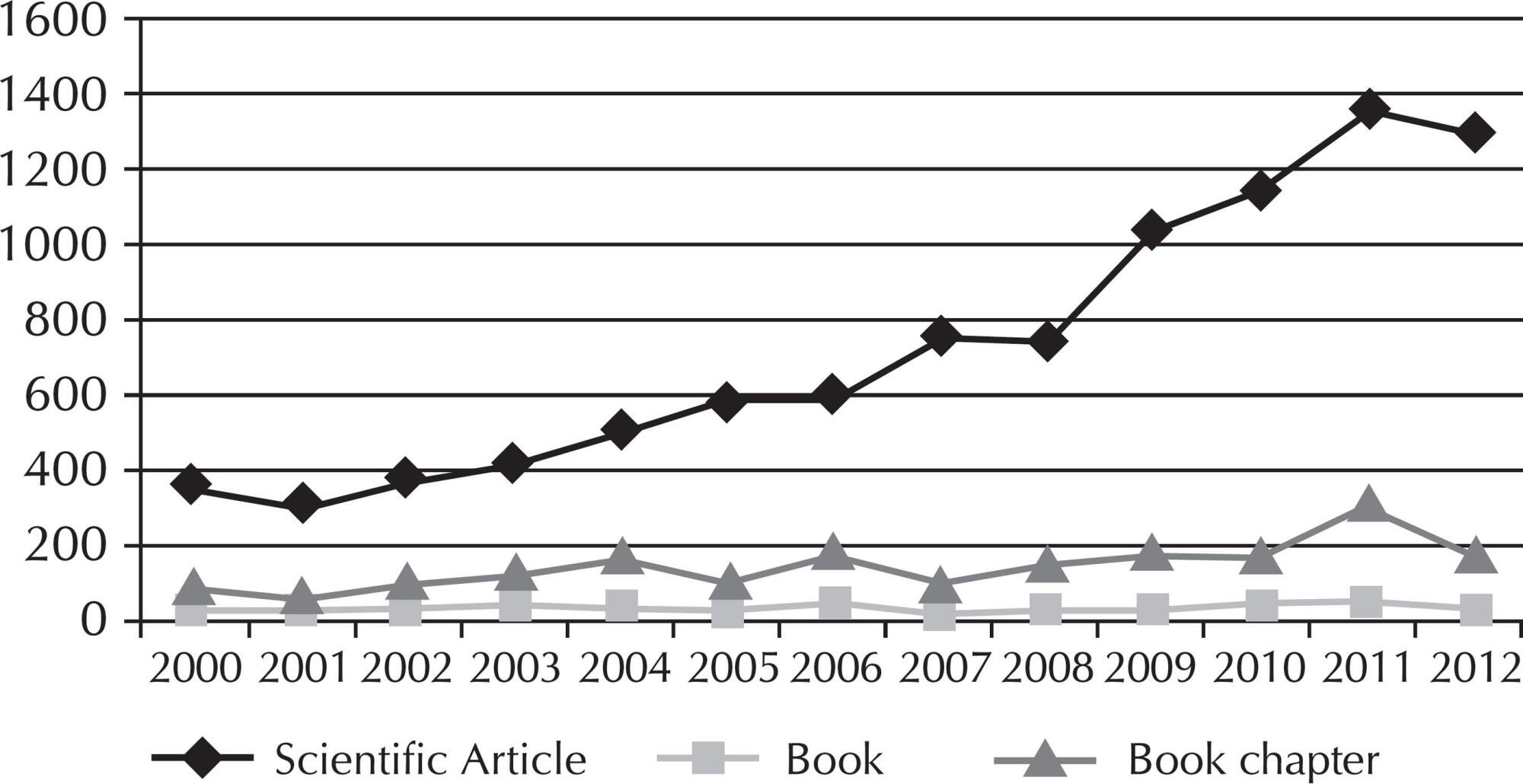
-
01-01-2015
Structure, process and outcomes of organ and tissue donation for transplantation
Revista Brasileira de Enfermagem. 2015;68(5):837-845
Abstract
Structure, process and outcomes of organ and tissue donation for transplantation
Revista Brasileira de Enfermagem. 2015;68(5):837-845
DOI 10.1590/0034-7167.2015680511i
Views0See moreABSTRACT
Objective:
to analyze the factors related to the structure, process and outcomes of organ and tissue donation for transplantation.
Method:
analytic, longitudinal and quantitative study, conducted in six hospitals in Natal/RN, between August 2010 and February 2011, with 65 potential donors (PD), by means of no participant observation structured script.
Results:
regarding the donation structure, there was deficiencies of physical resources (temperature control), materials (mobile radiology) human resources (nurse technicians) and lack of adequate records and care protocols. In the process of donation, the biggest problems were related to the evaluation stages, brain death diagnosis, maintenance and documentation, with greater proportion of care for the non-donor.
Conclusion:
the structure and process possibly determined the result of 72.3% no donation implementation of potential donors, indices compatible with the national data, but contradictory to those of Spain, which manages to transplant organs of 86.7% of its donors.
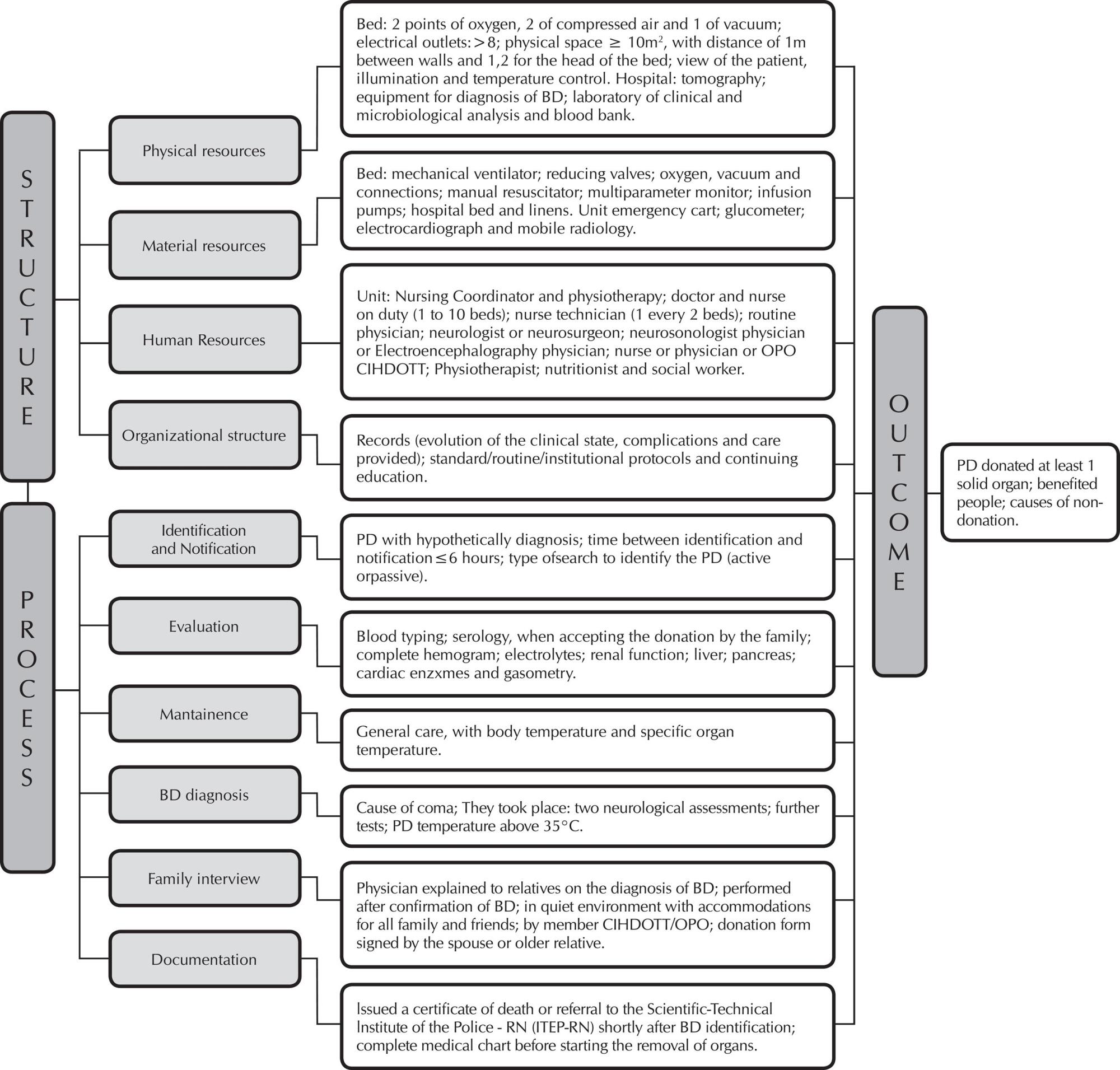
-
01-01-2015
The nurse in the area of collective health: conceptions and competencies
Revista Brasileira de Enfermagem. 2015;68(5):830-836
Abstract
The nurse in the area of collective health: conceptions and competencies
Revista Brasileira de Enfermagem. 2015;68(5):830-836
DOI 10.1590/0034-7167.2015680510i
Views0See moreABSTRACT
Objective:
to learn coordinators and professors’ conceptions from undergraduate Nursing courses of public universities in northern Brazil regarding collective health and to know the necessary competencies to work in the area.
Method:
data were collected through semi-structured interviews and subjected to thematic analysis.
Results:
the participants consider population health as an essential area for the training of nurses, where professionals have autonomy and confidence. It is an interdisciplinary, intersectoral and multidisciplinary field, with extensive scope, that studies the Unified Health System (SUS). The competencies to work in collective health identified were: to work at the SUS, to understand the health and disease process and its determinants and to develop actions towards integrality, to conduct health education, researches and systematization of the nursing care.
Conclusion:
the variety of conceptions about collective health among participants might reflect in training of nurses and their working area.
-
01-01-2015
Level of dependence among patients in a surgical unit
Revista Brasileira de Enfermagem. 2015;68(5):824-829
Abstract
Level of dependence among patients in a surgical unit
Revista Brasileira de Enfermagem. 2015;68(5):824-829
DOI 10.1590/0034-7167.2015680509i
Views0See moreABSTRACT
Objective:
to identify the complexity of the nursing care of inpatient surgical unit patients, using the Perroca patients classification scale.
Method:
a descriptive, cross-sectional study with 546 reviews of 187 patients between October and December of 2012. Data were analyzed using SPSS 18.0 and the Kappa test, to measure interrater agreement.
Results:
a predominance of patients in the categories of semi-intensive (46.5%) and intermediate care (44.0%) was found, with a prevalence of unassisted bath (58.4%) in the total sample, and bed bath (69.3%) in the semi-intensive care patients. The level of agreement between two pairs of raters was considered good.
Conclusion:
the systematic application of the instrument was useful as a complementary measure of the level of patient dependence, and may contribute to the improvement of the working process, refl ecting on management decision-making with regard to nursing workload
-
01-01-2015
Psychological violence in the nursing work
Revista Brasileira de Enfermagem. 2015;68(5):817-823
Abstract
Psychological violence in the nursing work
Revista Brasileira de Enfermagem. 2015;68(5):817-823
DOI 10.1590/0034-7167.2015680508i
Views0See moreABSTRACT
Objective:
to investigate and characterize psychological violence practices within teams in the relationship between patients, caregivers and other professionals with the nursing staff of the public hospital network of Caxias, in the State of Maranhão, Brazil.
Method:
descriptive, quantitative, cross-sectional study with data collected by form between November/2013-May/2014.
Results:
verbal aggression is the most common psychological violence subtype 95% (84), followed by bullying 27% (24). Emergency rooms 51% (45) are the most frequent place; patients 60% (53) are the main aggressors; nurses 76% (19) suffer more violence, being mostly female, young and inexperienced.
Conclusion:
the largest number of occurrences was of verbal aggression perpetrated by patients against nurses in the emergency room. Workers try to pretend that nothing happened or are inert in the face of violence. Employers do little about the case, referring to the need for strategies to control violence.
-
01-01-2015
Dietary intake and stress in patients with acute coronary syndrome
Revista Brasileira de Enfermagem. 2015;68(5):810-816
Abstract
Dietary intake and stress in patients with acute coronary syndrome
Revista Brasileira de Enfermagem. 2015;68(5):810-816
DOI 10.1590/0034-7167.2015680507i
Views0See moreABSTRACT
Objective:
to assess whether dietary intake of patients with acute coronary syndrome (ACS) meets national and international recommendations and whether there is a relationship with the levels of stress.
Method:
a cross-sectional study with 150 patients with ACS, who were interviewed with the Food Frequency Questionnaire and the Perceived Stress Scale-10.
Results:
daily intake above the recommendations: cholesterol (92%), fiber (42.7%) and protein (68%); intake below the recommendations: potassium (88%) and carbohydrates (68.7%); intake according to the recommendations: sodium (53.3%) and lipids (53.3%). Most patients with inadequate dietary intake (54%) were stressed or highly stressed. There was a signifi cant association between a lower stress level and a higher fi ber intake.
Conclusion:
in patients with ACS, dietary intake did not meet the guideline recommendations, and a lower fi ber intake occurs concomitantly with higher stress levels. Educational efforts can support patients in dietary intake adequacy and stress control.
-
ORIGINAL ARTICLE09-29-2022
Neither angels nor heroes: nurse speeches during the COVID-19 pandemic from a Foucauldian perspective
Revista Brasileira de Enfermagem. 2022;75:e20201329
Abstract
ORIGINAL ARTICLENeither angels nor heroes: nurse speeches during the COVID-19 pandemic from a Foucauldian perspective
Revista Brasileira de Enfermagem. 2022;75:e20201329
DOI 10.1590/0034-7167-2020-1329
Views1See moreABSTRACT
Objective:
to analyze the processes of meaning production, based on the speeches of nursing professionals, about how they feel about the titles of “angels and heroes” given by society during the pandemic of COVID-19.
Methods:
a qualitative, documentary research. Data was collected in October and November 2020 and analyzed from the perspective of the Discourse Analysis proposed by Michel Foucault.
Results:
they were organized into two thematic categories: “Angels and heroes? The (not) heroic reality of nursing during the pandemic” and “The search for recognition of the professional work of nursing: between what is said and what is not said”.
Final considerations:
the nurses’ speeches enunciate the search for decent conditions for the execution of care, fair wages, and recognition of the professional work by society.
-
REVIEW10-18-2022
Decision making by health professionals during COVID-19: an integrative review
Revista Brasileira de Enfermagem. 2022;75:e20210067
Abstract
REVIEWDecision making by health professionals during COVID-19: an integrative review
Revista Brasileira de Enfermagem. 2022;75:e20210067
DOI 10.1590/0034-7167-2021-0067
Views1See moreABSTRACT
Objective:
To analyze the scientific production on the decision making of health workers during the COVID-19 pandemic.
Methods:
Integrative review in the databases CINAHL, MEDLINE, Scopus, ScienceDirect, WoS, and BVS. Inclusion criteria: original articles available in full, in any language, related to the object investigated.
Results:
During this pandemic, health workers have been making decisions based on ethical/bioethical principles (utility, beneficence, non-maleficence, autonomy, justice, proportionality, flexibility, clinical prognosis, duration of the need, and fair health attention), values (solidarity, equality, equity, utilitarianism, relational autonomy, reliability, reciprocity, maximization of the benefits and resources, and prioritization of those in worse conditions), beliefs and personal motivation, protocols, directives, tools, algorithms, recommendations, and criteria.
Final considerations:
Decision making has never been so necessary as in this pandemic. This article is not a recipe for the professionals, since decision making is based on numerous factors. However, it provides them with a foundation that can be helpful in this difficult process.

-
ORIGINAL ARTICLE07-18-2022
Child and adolescent victims of sexual violence: aspects of physical and emotional development
Revista Brasileira de Enfermagem. 2022;75:e20200584
Abstract
ORIGINAL ARTICLEChild and adolescent victims of sexual violence: aspects of physical and emotional development
Revista Brasileira de Enfermagem. 2022;75:e20200584
DOI 10.1590/0034-7167-2020-0584
Views0See moreABSTRACT
Objective:
to identify the multidisciplinary health team’s perception on aspects of the physical and emotional development of children and adolescents who have suffered sexual violence.
Methods:
a qualitative study, carried out with 30 health professionals in a hospital in Bahia, Brazil, between June and July 2019. Data were collected from an interview guided by a semi-structured questionnaire. The results were interpreted according to Symbolic Interactionism.
Results:
some sexually violated children were under five years old and healthy, others had physical/mental disabilities. Victimized adolescents were in the pre-pubertal phase, with fragile body structure, not emotionally mature and unaware of sexuality.
Final considerations:
children’s physical and emotional aspects make children vulnerable to sexual victimization, as they facilitate the control and dominion that offenders need to have over them. As a protection strategy, it is recommended using sexual and health education linked to greater surveillance of family members, multidisciplinary team and educators.
-
ORIGINAL ARTICLE11-10-2022
Home care for children with gastrostomy
Revista Brasileira de Enfermagem. 2022;75:e20200699
Abstract
ORIGINAL ARTICLEHome care for children with gastrostomy
Revista Brasileira de Enfermagem. 2022;75:e20200699
DOI 10.1590/0034-7167-2020-0699
Views0See moreABSTRACT
Objectives:
to describe home care practices performed by family members for maintaining the life of children with gastrostomy.
Methods:
qualitative research using the Sensitive Creative method, with the Criatividade e Sensibilidade Corpo Saber [Corpo Saber Creativity and Sensitivity] dynamics. The participation included ten family caregivers of children with gastrostomy. The outpatient clinic of a federal hospital in Rio de Janeiro was the setting. Lexical analysis was used through the IRaMuTeQ® software.
Results:
Theme 1, entitled “The care for maintaining life performed by family members of children with gastrostomy at home”, was analyzed, comprising three classes: “The gastrostomy tube home care routine”; “The care with the gastrostomy/stoma”; and “Food and medication home care routine of children with gastrostomy”.
Final Considerations:
family caregivers used strategies to maintain the device and acquired new knowledge in this field, and in nursing competence, regarding stoma care, food administration, medication, and syringes.

-
ORIGINAL ARTICLE01-14-2022
Hospital structure elements demarcating (in)visibilities of institutional violence against children
Revista Brasileira de Enfermagem. 2022;75:e20200785
Abstract
ORIGINAL ARTICLEHospital structure elements demarcating (in)visibilities of institutional violence against children
Revista Brasileira de Enfermagem. 2022;75:e20200785
DOI 10.1590/0034-7167-2020-0785
Views0See moreABSTRACT
Objectives:
to analyze the hospital structure elements that demarcate (in)visibilities of institutional violence in hospitalized children.
Methods:
this is a descriptive-exploratory qualitative study that used approaches with Foucault’s thinking. Ten companions and 39 healthcare professionals from a university hospital in Salvador, Bahia participated. Data collection took place from November 2018 to June 2019 through semi-structured interviews. The discourse analysis method was used. The study was approved by the Institutional Review Board.
Results:
institutional violence was understood in the violations and invisibilities of the structure of health services through the problems: in infrastructure (physical structure, lack of human and material resources, scrapping of equipment); administrative and management; pilgrimage.
Final Considerations:
it is necessary to realize the invisibilities of the infrastructure to act in confronting institutional violence to hospitalized children.
-
ORIGINAL ARTICLE03-07-2022
The family of the child with special health care needs and their social relationships
Revista Brasileira de Enfermagem. 2022;75:e20210031
Abstract
ORIGINAL ARTICLEThe family of the child with special health care needs and their social relationships
Revista Brasileira de Enfermagem. 2022;75:e20210031
DOI 10.1590/0034-7167-2021-0031
Views0See moreABSTRACT
Objectives:
to identify aspects that can influence the types of bonds developed in the social support network of family members of children with special health care needs.
Methods:
qualitative research conducted through interviews with 15 family members/guardians in the city of Rio de Janeiro, from January to February 2020. Sanicola’s theoretical-methodological framework and Bardin’s thematic analysis technique were used.
Results:
social distancing, lack of responsibility for coordinating care, lack of supplies and lack of individualized care were weaknesses found in the families’ social relationships. However, the bonds were strengthened by the relationship of familiarity and availability of professionals in the care of children with special health needs.
Final Considerations:
understanding the configuration of primary and secondary social networks and the types of support offered can improve the care of children and strengthen bonds that provide security for families.
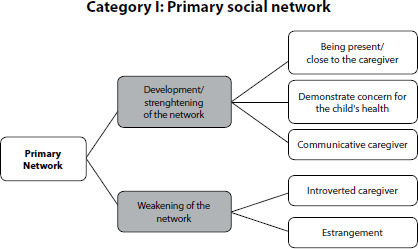
-
ORIGINAL ARTICLE07-18-2022
Prevalence of non-communicable chronic diseases and associated factors in deaf people
Revista Brasileira de Enfermagem. 2022;75:e20210205
Abstract
ORIGINAL ARTICLEPrevalence of non-communicable chronic diseases and associated factors in deaf people
Revista Brasileira de Enfermagem. 2022;75:e20210205
DOI 10.1590/0034-7167-2021-0205
Views0See moreABSTRACT
Objective:
To analyze the prevalence and factors associated with non-communicable chronic diseases in deaf people.
Methods:
Cross-sectional study with 110 deaf people in Maringá-Paraná, selected using the snowball sampling technique. Data were collected from February to August 2019, using a structured instrument; and, in the analysis, multiple logistic regression was used.
Results:
The self-reported prevalence of chronic diseases was 43.6%, the most frequent being: arterial hypertension (12.7%), depression (6.4%), diabetes mellitus (5.4%), respiratory disease (5.4%) and hypothyroidism (4.5%). Using health services for routine consultations was significantly associated with being bimodal bilingual. The only risk behavior significantly associated with chronic disease was excessive consumption of sweet foods.
Conclusion:
The prevalence of chronic diseases in this population may be higher than that found, as there is a possibility of underdiagnosis due to the low demand for routine consultations and the difficulty of communication with health professionals.
-
ORIGINAL ARTICLE06-03-2022
Sociodiscursive representations about leprosy in educational campaigns: implications on stigma reduction
Revista Brasileira de Enfermagem. 2022;75:e20210410
Abstract
ORIGINAL ARTICLESociodiscursive representations about leprosy in educational campaigns: implications on stigma reduction
Revista Brasileira de Enfermagem. 2022;75:e20210410
DOI 10.1590/0034-7167-2021-0410
Views0See moreABSTRACT
Objectives:
to analyze the socio-discursive representations about leprosy produced in posters of educational campaigns of the Brazilian Ministry of Health.
Methods:
a documentary and discursive research about posters of campaigns about leprosy produced by the Brazilian Ministry of Health and available on Google Search Images. For the analysis, we used the Critical Discourse Analysis approach and the Grammar of Visual Design.
Results:
the socio-discursive representations of leprosy are based on the biomedical ideology, through a normative-curative discourse that focuses on the dermatological manifestations of the disease. Regarding the construction of the compositional space, there are posters that emphasize the meaning that the disease does not prevent affectionate relationships, and others highlight as “new” the clinical manifestations of the disease.
Final Considerations:
the normative-curative discourse produced in the campaigns is not enough to face stigma related to the disease. For leprosy to be understood as a common chronic disease, it is first necessary to fight the “social leprosy”: the stigma.
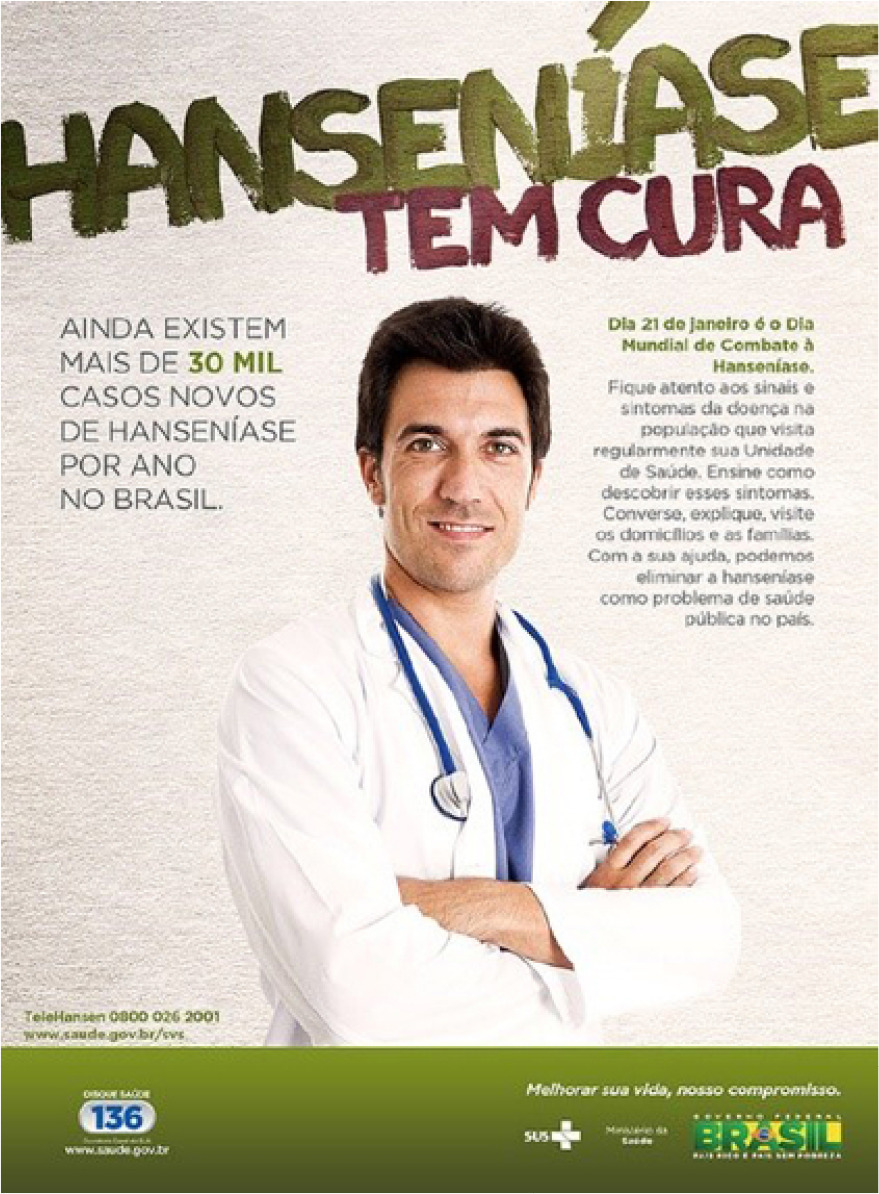
-
EXPERIENCE REPORT02-10-2020
Overcoming the challenges to offer quality training in psychiatric nursing
Revista Brasileira de Enfermagem. 2020;73(1):e20180208
Abstract
EXPERIENCE REPORTOvercoming the challenges to offer quality training in psychiatric nursing
Revista Brasileira de Enfermagem. 2020;73(1):e20180208
DOI 10.1590/0034-7167-2018-0208
Views0See moreABSTRACT
Objective:
to report the experience of the Psychiatric Nursing professors of the Nursing Undergraduate Course of the Nursing School, Universidade Federal de Minas Gerais (UFMG) and the challenges faced to offer quality training.
Method:
This is an experience report about the experience of Psychiatric Nursing professors of the Nursing Undergraduate Course of the Nursing School, UFMG.
Results:
After losing the workload of 120 hours in the Psychiatric Nursing Undergraduate Course, the area developed elective disciplines with a total of 330-hour load, in addition to extension and research projects.
Final considerations:
the precariousness of the area of Nursing training after curricular restructuring in a higher education institution, whether in relation to hour load or in the allocation of teaching vacancies, is in line with advances of the Brazilian Psychiatric Reform and epidemiological data of psychic illness and drug use.
-
REVIEW07-31-2020
Educational practices for families of children and adolescents using a permanent venous catheter
Revista Brasileira de Enfermagem. 2020;73:e20190129
Abstract
REVIEWEducational practices for families of children and adolescents using a permanent venous catheter
Revista Brasileira de Enfermagem. 2020;73:e20190129
DOI 10.1590/0034-7167-2019-0129
Views0See moreABSTRACT
Objectives:
to identify, in the scientific literature, the educational practices performed by nurses with the families of children and adolescents using long-term venous catheters, concerning home care.
Methods:
integrative review in LILACS, PubMed, SCOPUS, Web of Science and CINAHL databases, from August to September 2018.
Results:
we analyzed eight articles that met the inclusion criteria. The results showed that all studies are international, mostly North American and with low level of evidence. The educational practices found were home visits, production of printed educational materials, use of mannequins for simulation, creation of an educational video, and combined educational practices.
Final Considerations:
the care provided by families at home in the countries studied is more complex than in Brazil, and the conclusion is that Brazilian studies need to advance in publications related to this area.
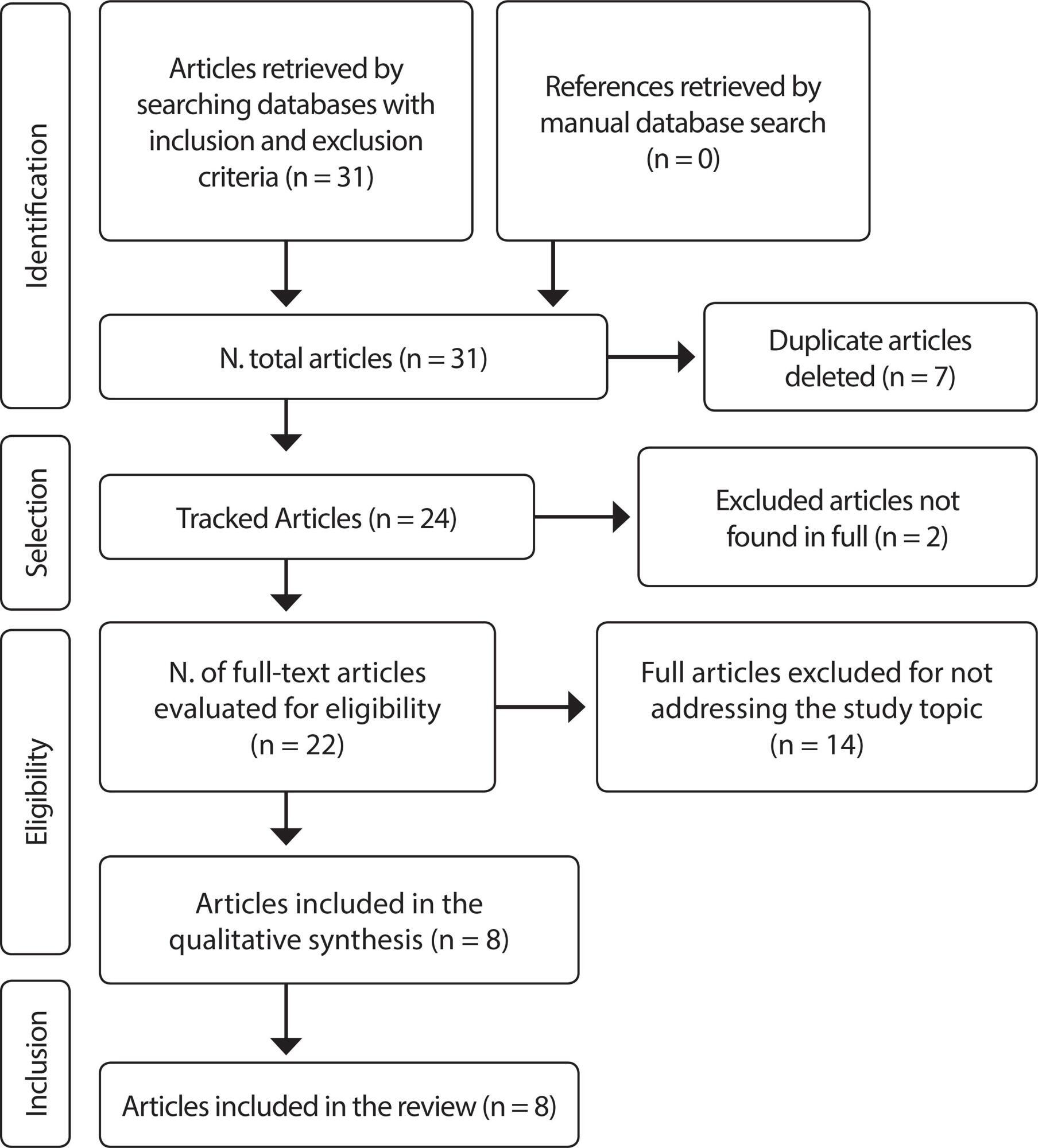
-
ORIGINAL ARTICLE02-06-2023
Teaching entrepreneurship in undergraduate Nursing course: evaluation of an educational proposal
Revista Brasileira de Enfermagem. 2023;76(2):e20210244
Abstract
ORIGINAL ARTICLETeaching entrepreneurship in undergraduate Nursing course: evaluation of an educational proposal
Revista Brasileira de Enfermagem. 2023;76(2):e20210244
DOI 10.1590/0034-7167-2021-0244
Views1See moreABSTRACT
Objective:
To evaluate a proposal for teaching entrepreneurship in an undergraduate Nursing course that uses active methodologies and activities based on the theory of meaningful learning.
Methods:
Interventional, prospective study, with a quantitative perspective, with a total of 102 participating students, carried out from July 2017 to December 2019 at a public university in the state of Sao Paulo. Statistical analysis were performed by non-parametric Chi-square or Fisher’s exact tests, with differences considered statistically significant if p < 0.05.
Results:
Improvements were observed in almost all items evaluated, revealing that meaningful learning became more effective with the use of active teaching methodologies. Most students need adaptation and effort to be put into these methods.
Conclusions:
The proposal offers pedagogical content adaptation, specifically for nursing students. New research should expand teaching-learning techniques for the development of future nurses, preparing them adequately for the job market.
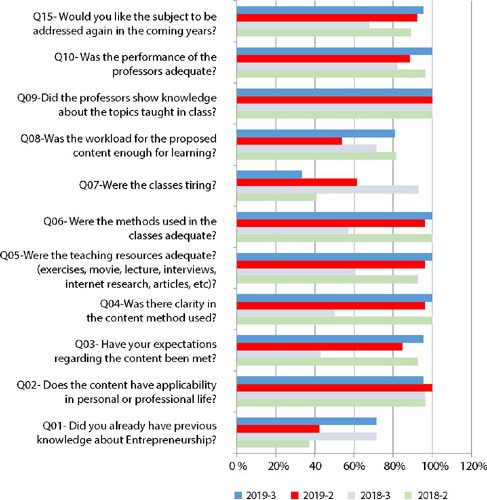
-
ORIGINAL ARTICLE08-16-2021
Gender debate as a challenge in nursing training
Revista Brasileira de Enfermagem. 2021;74(5):e20201001
Abstract
ORIGINAL ARTICLEGender debate as a challenge in nursing training
Revista Brasileira de Enfermagem. 2021;74(5):e20201001
DOI 10.1590/0034-7167-2020-1001
Views0See moreABSTRACT
Objectives:
to understand the challenges of introducing gender debate in nursing training from undergraduate students’ perspective.
Methods:
a qualitative, exploratory-explanatory study. Data were collected through a semi-structured interview applied to 12 undergraduate nursing students at a public university in São Paulo. For data treatment and analysis, the Discourse of the Collective Subject was used in light of Boaventura de Sousa Santos’ knowledge production paradigm theoretical framework.
Results:
nursing education remains centered on the traditional scientific model, neglecting gender and strengthening stereotypes aimed at the feminization of the profession.
Final Considerations:
nursing training has a challenge of implementing actions that deepen the gender theme. Therefore, some strategies are suggested, such as improving professor training and appropriating emancipatory pedagogical practices; reviewing pedagogical political projects; curriculum theorization and restructuring; problematizing gender issues for nursing leadership.
-
ORIGINAL ARTICLE08-30-2021
Historical aspects in pain management in palliative care in an oncological reference unit
Revista Brasileira de Enfermagem. 2021;74(5):e20200761
Abstract
ORIGINAL ARTICLEHistorical aspects in pain management in palliative care in an oncological reference unit
Revista Brasileira de Enfermagem. 2021;74(5):e20200761
DOI 10.1590/0034-7167-2020-0761
Views0See moreABSTRACT
Objective:
Describe the actions implemented for pain management in palliative care oncology and analyze the contribution of Hospital do Câncer IV, as a reference unit at the National Cancer Institute.
Methods:
Study of the history of the present time, whose sources were written documents and interviews with five participants. The collection took place from February to June 2018. The analysis of the written sources took place through internal and external criticism of the documents, considering their chronology and theme.
Results:
Professionals contributed with actions for pain management in palliative oncology care: in discussions and final drafting of ordinances, as rapporteurs at national and international events, in the elaboration of humanization conducts and systematization of assistance in addressing pain.
Final considerations:
These actions favored assistance in palliative oncology care at various levels of health care for patients and families, with greater technical and scientific recognition for all.
-
TECHNOLOGICAL INNOVATION06-04-2021
Development of a nursing website for critical care regarding healthcare-associated infections
Revista Brasileira de Enfermagem. 2021;74:e20200928
Abstract
TECHNOLOGICAL INNOVATIONDevelopment of a nursing website for critical care regarding healthcare-associated infections
Revista Brasileira de Enfermagem. 2021;74:e20200928
DOI 10.1590/0034-7167-2020-0928
Views0See moreABSTRACT
Objective:
to describe the development of a website about the main healthcare-associated infections and the respective bundles to prevent these diseases, oriented toward intensive care unit nursing.
Methods:
experience report describing the development of technological innovation by nurses, using computational tools and technological production methodological research and following the product development process.
Results:
nurses developed an educational website which can be accessed through computers, tablets, and smartphones at the electronic address irastis.com and focuses on healthcare-associated infections.
Final considerations:
digital technologies have contributed to fulfill demands in health care, research, and education. The developed website has the potential to support reduction in healthcare-associated infection rates, since it makes preventive measures for these infections available and refers users to publication environments that systematize the implementation of the bundles.

-
ORIGINAL ARTICLE10-21-2019
Being an institutionalized elderly person: meaning of experiences based on Heidegger’s phenomenology
Revista Brasileira de Enfermagem. 2019;72(6):1632-1638
Abstract
ORIGINAL ARTICLEBeing an institutionalized elderly person: meaning of experiences based on Heidegger’s phenomenology
Revista Brasileira de Enfermagem. 2019;72(6):1632-1638
DOI 10.1590/0034-7167-2018-0763
Views0See moreABSTRACT
Objective:
Analyze the meaning of being an elderly person living in a long-term institution.
Method:
Qualitative study based on Martin Heidegger’s thought. Twelve phenomenological interviews were conducted with people aged over 60 years living in a long-term institution for the elderly in the city of Itabuna, Bahia, Brazil.
Results:
The units of meaning identified were: experience of progressive loss of autonomy and independence, perception of living in an institution as an inevitable circumstance; and being-with becoming being-alone/being-lonely. After the identification of ontic aspects and hermeneutical understanding, the unit of meaning was constructed: meaning of being an elderly person living in a long-term institution.
Final considerations:
The ontological needs referring to being an elderly person remain forgotten. As we are ontic and ontological, limited care to the ontic instance indicates deficiencies in institutionalization. Improvements are required to ensure the right to age with quality of life to this population.
-
06-11-2021
Resilience in elderly people: factors associated with sociodemographic and health conditions
Revista Brasileira de Enfermagem. 2021;74:e20200171
Abstract
Resilience in elderly people: factors associated with sociodemographic and health conditions
Revista Brasileira de Enfermagem. 2021;74:e20200171
DOI 10.1590/0034-7167-2020-0171
Views0See moreABSTRACT
Objective:
to describe the sociodemographic and health characteristics of elderly people, measure the score of total resilience and by sex and verify the association of sociodemographic and health variables with total resilience and by sex.
Methods:
this is a household survey with 808 elderly people, assessed by validated instruments. Student’s t test and multiple linear regression (p<0.05).
Results:
most were female, 60|-|79 years old. The total resilience score was 78.06, for men 81.53 and for women, 76.32. Total resilience was associated with males; positive self-perceived health; greater participation in Advanced Activities of Daily Living; fewer morbidities; absence of depressive symptoms. Among men and women, resilience was associated with greater participation in Advanced Activities of Daily Living and absence of depressive symptoms and, specifically, among women, positive self-perceived health.
Conclusion:
these results contribute to nursing care, aiming to encourage resilience.
Search
Search in:
Nuvem de Tags
Adolescente (85) Atenção Primária à Saúde (239) COVID-19 (91) Criança (91) Cuidados de Enfermagem (269) Educação em Enfermagem (151) Educação em Saúde (139) Enfermagem (930) Enfermagem Pediátrica (86) Estudantes de Enfermagem (77) Estudos de Validação (131) Família (87) Idoso (208) Promoção da Saúde (99) Qualidade de Vida (104) Saúde do Trabalhador (86) Saúde Mental (145) Saúde Pública (82) Segurança do Paciente (150) Tecnologia Educacional (100)



